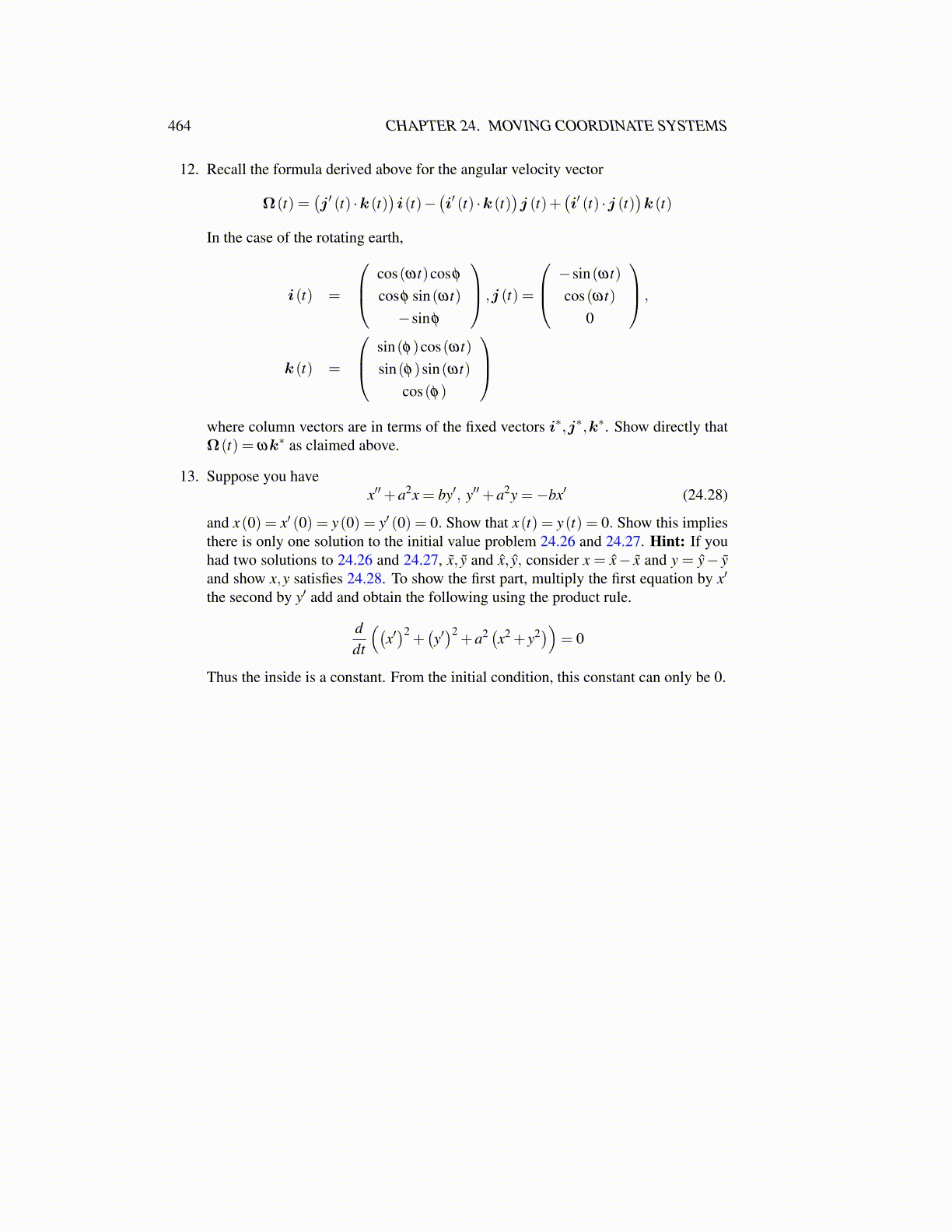
464 CHAPTER 24. MOVING COORDINATE SYSTEMS
12. Recall the formula derived above for the angular velocity vector
Ω(t) =(j ′ (t) ·k (t)
)i(t)−
(i′ (t) ·k (t)
)j (t)+
(i′ (t) ·j (t)
)k (t)
In the case of the rotating earth,
i(t) =
cos(ωt)cosφ
cosφ sin(ωt)−sinφ
,j (t) =
−sin(ωt)cos(ωt)
0
,
k (t) =
sin(φ)cos(ωt)sin(φ)sin(ωt)
cos(φ)
where column vectors are in terms of the fixed vectors i∗,j∗,k∗. Show directly thatΩ(t) = ωk∗ as claimed above.
13. Suppose you havex′′+a2x = by′, y′′+a2y =−bx′ (24.28)
and x(0) = x′ (0) = y(0) = y′ (0) = 0. Show that x(t) = y(t) = 0. Show this impliesthere is only one solution to the initial value problem 24.26 and 24.27. Hint: If youhad two solutions to 24.26 and 24.27, x̃, ỹ and x̂, ŷ, consider x = x̂− x̃ and y = ŷ− ỹand show x,y satisfies 24.28. To show the first part, multiply the first equation by x′
the second by y′ add and obtain the following using the product rule.
ddt
((x′)2
+(y′)2
+a2 (x2 + y2))= 0
Thus the inside is a constant. From the initial condition, this constant can only be 0.